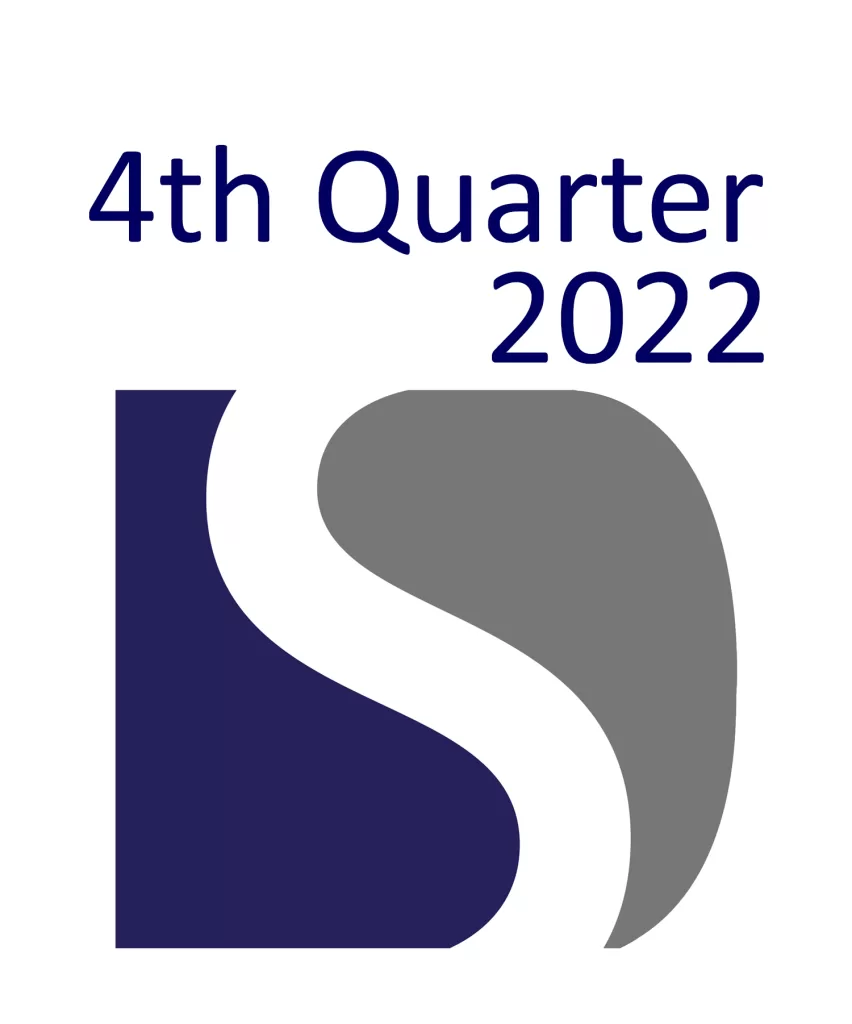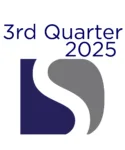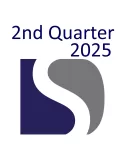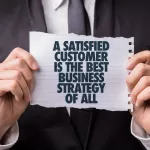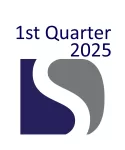CUSTOMER STRUGGLES WITH A PROCESS THAT’S NOT WORKING
Recently, I’ve been working with a customer – we’ll call them Customer ABC – who struggles to find enough people to keep all the production lines running, all the time.
When we first began working together, they were caught in a cycle: Casting a wide net, bringing in dozens of candidates each month to interview and onboard-only to churn through all of them, to no avail.
This approach was not working.
My Initial Analysis:
- Workers had a tremendous amount of insight into the production environment.
- There was also a disconnect between the frontline workers and management.
- This was happening simultaneously with management struggling to understand the performance issues.
I challenged them to focus on improving the relationships with the current team members for two reasons. First, to understand what experience, skills, and talent(s) they needed to recruit-second, to realize the potential capacity they overlooked within their current employees.
Improving interpersonal skills makes it easier to balance the needs of the company with those of employees. An effective dialogue between employees and managers will foster agreement on what those needs are, together.
Next, I advised them to close the gap between capabilities needed and what the workforce currently possessed. By showing the link between lack of communication and capabilities to the causes of their quality issues and missed production opportunities, they then had a clear path forward to improve production capacity.
I’ll discuss where they are today at the conclusion of this report. But this customer’s experience – a challenge at the cross-section of people, production, culture, and pressure to perform – is all too common in today’s workplace.
How is your business experiencing it?
As a leader, what are you seeing or feeling when it comes to these challenges and the future of your business as we prepare for a recession?
UNDERSTANDING WHERE YOU ARE TODAY
Think fast: I want you to name all the factors that impact your organization today.
You most likely named one, if not several (or all), of the following factors:
- The economy
- Society and culture
- How the industry is changing organically
- w people are changing organically
- Investor or leadership expectations or pressure
- Financial or production goals
Next, let’s name all the models, systems, or processes. These are what your organization uses to assess, create, deliver, and capture value.
You might include functions like:
- Customer Experience Model: Shopping, deciding, purchasing, using, obsolescence
- Operations Management System: People, material, information, processes, equipment
- Critical Path Model: The bare bones steps your product or service must take
- Employee Management System: Environment, expectations, training, leadership
- Accounts Receivable Function: Working capital requirements, customer relationships
Last, but not least, I want you to think about what effect people, information, resources, routines, and capital have on your organization’s capabilities.
The reality is that if you asked these questions of just three other people on your team, you’d get three different answers. Expand that beyond those three people to your leadership team, operational team, or your company-as-a-whole. You now have hundreds of responses – and hundreds of ideas as to how to move forward.
This is why pre-developed frameworks or pre-packaged methods don’t work.
Every organization is unique.
You must be agile and iterative in your discovery, comprehension, and delivery. You must be people-focused.
As we begin 2023, the pressure to focus on people, solve supply chain issues, and recession-proof your business is stronger than ever.
What’s your strategy?
WHERE TO START
Chances are you’re looking for not only support, but also success in the following areas:
- Optimize productivity
- Meet numerous customer demands
- Meet combinations of quality, delivery, and price
- Grow in a defensible, consistent way
- Improve robustness by aligning all the aspects of the business: Purpose, vision, strategy, business model, and organizational design
- Establish, validate, and/or improve strategies
- Go forward with clear, detailed direction and organizational awareness of upcoming choices
- Reimagine your organization to better fulfill your purpose or strategic intent
- Optimize systems
You’re not alone in wanting – and needing – to support all these areas, even simultaneously. Doing so takes a new kind of strategy.
EXPERIENCE PEOPLE-FOCUSED STRATEGIC SUCCESS
It’s time to solve your greatest challenges with people-focused capabilities and strategic direction to achieve the next level of success.
Here’s how I do it: DIDI
DIDI stands for…
- Discover
- Integrate
- Deliver
- Iterate
This approach…
- Serves as the starting point for my work with people and a strategic direction
- Puts people first
- Establishes a clear direction to check-off any of the needs, expectations, pressures you listed above
- Sets you up to succeed and win
HERE’S HOW TO START
→DISCOVER
DISCOVER is the first step in DIDI. This process produces a factual narrative about your company’s aspirations and the unique way your people create, deliver, and capture value.
It takes note of your company or brand culture; it details the current state of your people, the activities they do, and their necessary technology.
It describes where you compete, how you create customers, and how your business model performs. Here are four things to consider when it comes to your organization and DISCOVER:
- Take inventory of employee motivation and competency, to fully understand capability
- Make the distinction between external and internal challenges
- Measure what makes performance easier, not easier to measure
- Make sure everyone understands what must stop, just as much as what you must add
→INTEGRATE
INTEGRATE is the second step of DIDI. During INTEGRATE, we take what we learn from DISCOVER and build the right framework for approaching needed changes.
Your framework is the why, what, and how of improvement and innovation. This is key to your success because the framework is built from facts about and aspirations of your company. It does not start with an outsider’s idea of how your organization should perform or change.
We use your framework to identify the needed capabilities in order to realize what has to be true for your strategic choice to succeed. INTEGRATE results identify what capabilities are needed, when they are required, and by whom.
It identifies and prepares those who are responsible for marshaling in capabilities to improve your business model.
INTEGRATE also includes the organizational design necessary to optimize capabilities. Communication plans are made to provide a consistent message throughout the next two phases.
Here are three things to consider when it comes to your organization and INTEGRATE:
- Find the intersection of current capabilities and needed capabilities
- Remember to change organizational factors, like incentives and where decisions are made, to reinforce expected behaviors
- Don’t assume people will drop closely-held beliefs because a better way comes along; facilitate interactions the first few times to ensure comprehension.
→DELIVER
DELIVER is the third step of DIDI. DELIVER makes sure that we ‘deliver’ changes are natural to the way your people work together.
It dictates where capabilities will reside within the company. This step elicits the most emotion because it involves a lot of new information/communication, and then, change. Change can be painful anywhere on the continuum but people have a greater tolerance for decisions if they are making them.
My “delivery” is to ensure that the right environment meets people where they are, so that they can make the best and/or most strategic decisions and take accountability for their part of the strategy and the expectations of their jobs.
Here are three things to consider when it comes to your organization and DELIVER:
- Foster agility and change, innovation and improvement as a part of day-to-day activities
- Only perform pilot projects if you must; new ideas should be practiced on real work
- If the pace is slow, don’t rush. Find out why the uptake is lagging and adjust the approach
→ITERATE
ITERATE is the fourth, and final, step of DIDI. ITERATE makes me think of a product design process where there are sprints and do-overs. Anywhere along the DIDI path, facts can be revealed that may result in adjustments in the framework and delivery. That’s where we must ITERATE.
What saves this process from spiraling into an infinite do-loop is the strategic choice behind DIDI.
he strategic choice has been made the direction is set.
Since DISCOVER is about having a common understanding of the gap between where you are and where you want to be, it is highly unlikely that anything will be discovered that negates the strategy.
This phase not only ensures the right capabilities are embedded, but also helps in preventing cultural burnout. Cultural fatigue occurs most often from a poorly designed or executed initiative. ITERATE also helps to prevent scope-creep and micro-management.
Here are three things to consider when it comes to your organization and ITERATE:
- Avoid changing in the middle of change, and stick to the plan; don’t iterate too soon
- When progress peaks, consider formalizing and coming back for more at a later date
- Make sure everyone understands the scope and context of each iteration
SO, WHERE DO WE START?
If People-Focused Strategic Success is an interesting idea to you, but you’re not quite sure where to start, here are three ideas for taking action today.
Discover more about your biggest challenge
During the next few staff meetings, pick your biggest challenge, then go around the room and ask everyone to describe what they believe to be the problem with meeting that goal. Doing this will help your team realize that no two people have the same understanding.
It’s also the opportunity to fully understand the context of the problem and then frame it in a way that provides a path forward.
Pay attention:
- Is the overall tone one of optimism or despair?
- Do people believe there is one cause keeping the team from reaching the goal?
- What will you do to start solving the problem?
Take near-term control of your supply chain
Whether you produce goods, information, or services, the materials of what you offer are essential ingredients. Chasing issues up the supply chain is the best way to fix problems permanently, but it also takes the longest time. In the meantime, you have to use what you can.
It is not a matter of just sorting the good from the bad. Rather, it’s about what could possibly be used.
Processes have limits, and if your team can’t determine what inputs are outside your processes’ capabilities, then you can end up wasting a great deal of time and money.
Develop methods for your employees to quickly determine your capability and what’s outside your process capabilities. You will reap the benefits immediately. You will also have more specific details for your suppliers when chasing down those issues.
Put a popular model to work
“Do unto others as you would have them do unto you.” That’s The Golden Rule; chances are, you were taught The Golden Rule growing up. It’s time to adopt The Platinum Rule. What’s The Platinum Rule?
“Treat others as they would like to be treated.” Why? Because now you have to learn how each and every employee likes to be treated. Situational Leadership is an effective framework for leaders to add much-needed structure. The challenge is how to put that wholesale approach to work.
PRACTICE: I recommend starting with a list of your employees. In a column next to their names document their level of motivation-I being the least and 5 being the highest.
Define “motivation” as what makes sense for the needs of the work to be done. You might want to use time & attendance, initiative, engagement, etc.
In the next column rank their capabilities from I to 5, 1 being least capable (enthusiastic beginner) and 5 being the most capable (peak performer).
If you find you have people who can talk through the work but struggle to actually do it, you can break capability down into competency and capacity.
Once you have a ranking for everyone, review the rankings with a trusted business partner who knows your people. Once you are confident with the numbers you have, review the findings with each employee. It is a great way to focus the discussion on the needs that benefit both the company and each employee. I recommend doing this for current and future roles.
IN CONCLUSION: WHAT HAPPENED TO CUSTOMER ABC?
Now, let’s turn our attention back to the customer – Customer ABC – you met in the introduction. You might be wondering where they landed…
After using the DIDI Approach, I tapped into some of the insights bottled up within their employees. And, their next action became clear: They needed to know how to train everyone.
Historically, the team struggled to stay current with mandatory training and had an even worse time getting people to show up for additional training. My advice was to make training the responsibility of the employee.
However, like empowerment, a company can’t just flip a switch and – low and behold! – employees are instantaneously doing the right things. You must have the right system in place for employees to easily get the needed training.
With employees accountable for their own training, behaviors reveal who struggles to maintain capabilities, who is happy staying where they are, and who wants more responsibility. Much of the training work (previously handled by managers) started to be handled by the employees. Employees started self-selecting their careers, and they were beginning to take charge of their own paths.
The effect of this new approach on process improvement and problem solving has been incredible. Now, they are significantly reducing the number of times they repeatedly solve the same problem.
They are also able to improve and develop much needed management systems, instead of managers coordinating everything. Because of the shortage of qualified candidates, they don’t have to worry about what to do with people freed up from process improvement.
Turnover is down and the selection process is streamlined. It’s been fascinating to watch as they realize that their previous production capacity issues were, by far and large, due to lack of employee capability – not a shortage of employees.
While the supply chain teams worked their way upstream, operators have become much better at recognizing material variation before trying to use it in the machines. By adjusting machine settings alone, they’ve significantly dropped the hours previously wasted on chasing material variation.
Now, they’re ready for whatever 2023 holds.
SEAN’S FAVORITE READS ON THE SUBJECT:
Labor pool depth: Voluntary separation are still 20% higher than pre-pandemic: 7 Statistics on Employee Turnover
Supply chain management: Global schedule reliability is improving but still at historical lows at 46.2%, compared to 2019 highs above 80%: Schedule Reliability Continues to Improve
Struggling with inflated costs and then enduring a recession: US Recession Forecast Within Year Hits 100%…
Meeting customer experience expectations leads to price premiums: Experience is Everything – PWC.
To learn more about People-Focused Strategic Success and to implement The DIDI Approach in partnership with Driscoll Organizational Solutions, please reach out to Sean directly: sean@driscollsolutions.com.
Check out further articles by Sean: Driscoll Solutions Perspective

